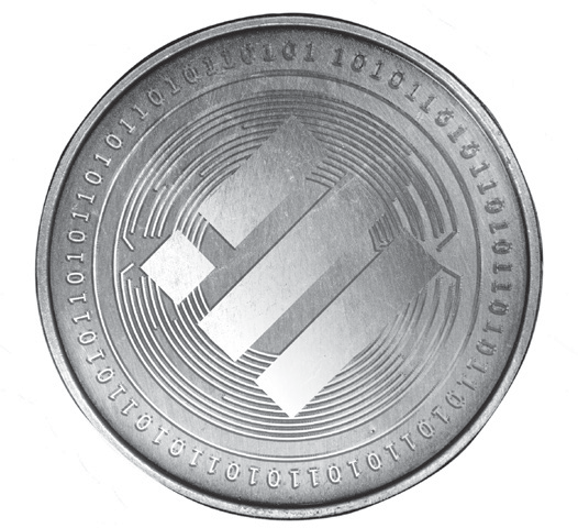In September 2019, Binance announced that it was launching a new stablecoin. The token was developed in partnership with Paxos, a regulated financial institution that issues digital assets.
Paxos started as a fintech company in 2012. The company is based in New York and is regulated by the New York State Department of Financial Services. In 2018, Paxos launched one of the first digital assets to be regulated by a US state. The asset was called PAX, and it was a stablecoin that was backed by the US dollar. Only a year later, Paxos launched BUSD in partnership with Binance.
Up until this point, the majority of stablecoins had been built on the Ethereum blockchain. Binance USD was one of the first stablecoins to be built on the Binance Chain. This was a strategic move by Binance. By launching a stablecoin on their own blockchain, they were able to provide an alternative to Ethereum’s popular stablecoins.
In the months following the launch of Binance USD, the token quickly gained popularity. This was in part due to Binance’s aggressive marketing campaign. The token was also added to several popular cryptocurrency exchanges, such as OKEx and Huobi.
What is Binance USD (BUSD)?
BUSD is a fiat-backed stablecoin issued by Binance and Paxos. Each BUSD token is backed 1:1 with US dollars held in reserve. BUSD aims to provide a more stable cryptocurrency alternative for traders and investors who are looking to avoid the volatility of the digital asset market.
BUSD is an ERC20 token built on the Ethereum blockchain. However, it also supports BEP-2. BEP-2 is a technical standard that defines how new digital assets can be created and transferred on the Binance Chain.
The Binance Chain is a blockchain platform developed by Binance. By being interoperable between the company’s native chain and the most popular smart contract platform, Binance can offer its users a wide range of options when it comes to digital assets. Many wallets and lending platforms also accept BUSD. This provides the infrastructure needed for Binance USD to be widely used.
For example, a user can buy BUSD with BTC on the Binance.com website and then use the BUSD to trade on the Binance DEX. If they want to participate in Ethereum smart contracts, they can convert their BUSD to ETH. Whether a BUSD holder is interested in yield farming, collateralizing for loans, paying for goods or services, and everything in between, there are various benefits to holding Binance USD.
This stablecoin is approved and regulated by the New York State Department of Financial Services (NYDFS). Along with regular audits, this regulation helps to ensure that each BUSD token is backed 1:1 with US dollars. This assurance gives investors more confidence when using this stablecoin.
Overall, Binance USD is a stablecoin with versatile features. Backed by the largest cryptocurrency exchange in terms of trading volume, BUSD has a lot of potential. In the next section, we’ll explore how BUSD works and how it’s different from other popular stablecoins.
How does Binance USD Work?
“BUSD is a fiat-backed stablecoin, which means that for every BUSD in circulation, there is $1 kept in a bank account as a reserve.
This is different from other popular stablecoins, like DAI, which are instead collateralized using other cryptocurrencies.
To ensure that there are enough US dollars to back all of the BUSD in circulation, Binance and Paxos have teamed up with some of the world’s largest banks. Together, they have established a reserve that is used to back all of the BUSD tokens in circulation.
Paxos is a regulated financial institution that issues digital assets. They are also the company behind the popular PAX stablecoin. As a cryptocurrency custodian, Paxos is responsible for holding the USD reserves that are used to back the BUSD tokens. This digital financial infrastructure allows BUSD to be fully redeemable for US dollars.
 Binance, on the other hand, is responsible for managing the BUSD token. This includes listing the token on their exchanges and providing customer support. In other words, Binance is the face of the BUSD stablecoin.
Binance, on the other hand, is responsible for managing the BUSD token. This includes listing the token on their exchanges and providing customer support. In other words, Binance is the face of the BUSD stablecoin.
Through smart contracts, Binance is also able to mint and burn BUSD tokens as needed. Minting is the process of creating new BUSD tokens. This is done when Paxos deposits US dollars into the reserve. The newly minted BUSD tokens are then sent to the customer’s wallet. Burning is the opposite of minting. It’s the process of destroying BUSD tokens. This is done when customers redeem their BUSD for US dollars.
As mentioned earlier, the BUSD token was created with the help of Ethereum’s ERC20 standard. However, it is also compatible with Binance’s BEP-2 standard. This means that the token can be used on both Ethereum and Binance Chain. The way this works is that when a user wants to move their BUSD from one blockchain to another, they simply have to convert it using Binance’s Convert function.
The Binance Convert function is a feature that allows users to seamlessly move their digital assets between different blockchains. This is possible because Binance acts as a bridge between the two chains.
For example, let’s say that a user wants to convert their BUSD from Ethereum to Binance Chain. All they would need to do is send their BUSD to a designated address on Binance Chain. Binance would then automatically convert the BUSD to the equivalent amount of BEP-2 BUSD and send it to the user’s wallet. This same process can be used to convert BUSD from Binance Chain to Ethereum.
The Binance Convert function is a key feature that makes Binance USD a versatile stablecoin. By being compatible with both Ethereum and Binance Chain, the token can be used in a variety of different applications.
Simply put, Binance USD works because Binance’s influence partnered with Paxos security provides people with a digital dollar they can trust not to wildly fluctuate in value. When this is combined with monthly attestation reports and strong regulations, it becomes a very appealing stablecoin.
Shariah Opinion
The BUSD token can be considered Shariah compliant. It’s used for valid and plausible services. BUSD token holders do not hold equity in the underlying activities, and therefore token holders cannot be responsible for all and every activity that occurs on Binance.
Conclusion
Based on and subject to the foregoing information, and for the purposes of this conclusion, nothing has come to our attention that causes us to believe that BUSD is in breach of Shariah* principles and rulings as adopted by the scholars conducting this research.
*Attention is drawn to the term ‘Sharia’ and ‘Sharia compliant’ and its interpretation thereof as expressed in the following link https://shariyah.net/glossary/



